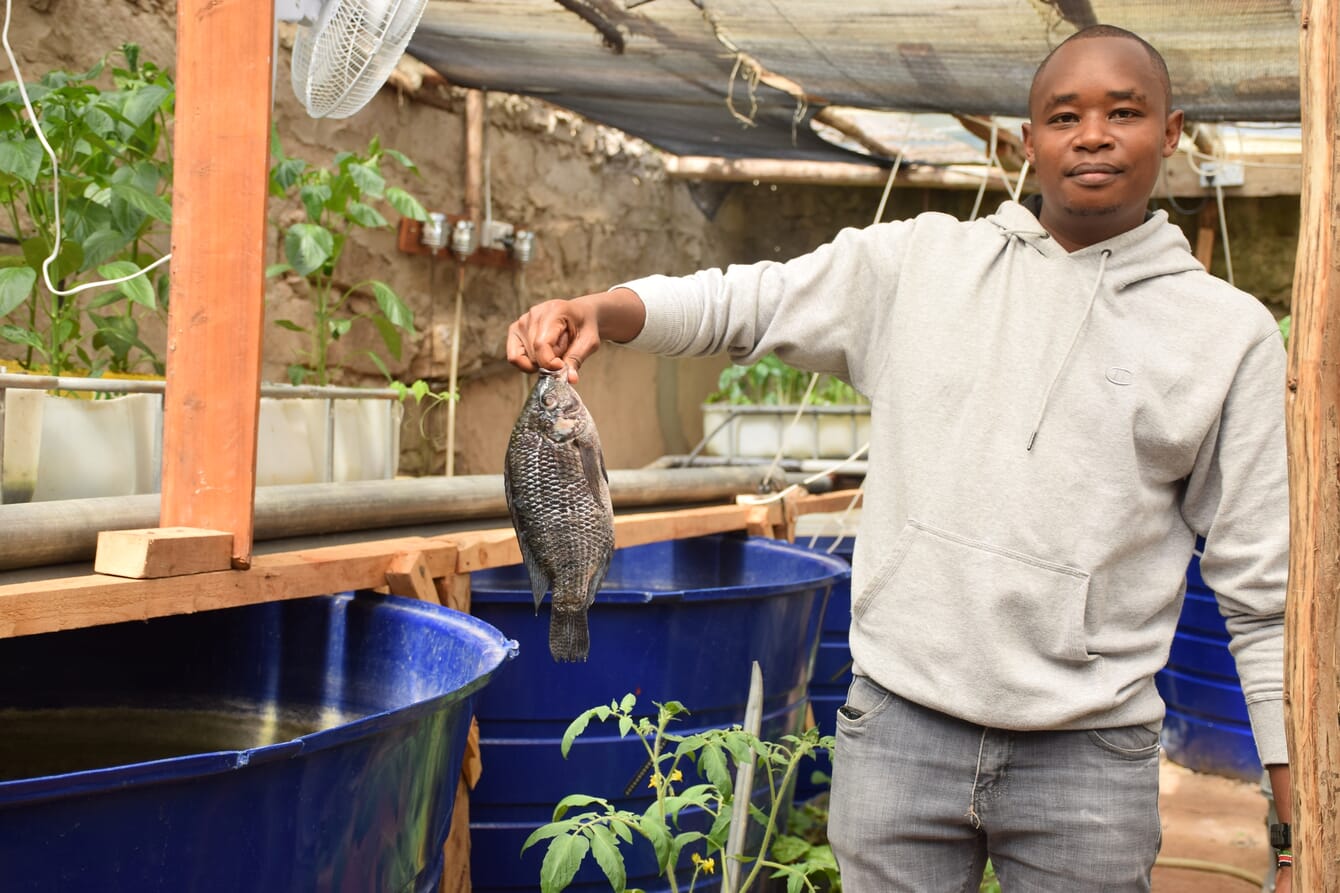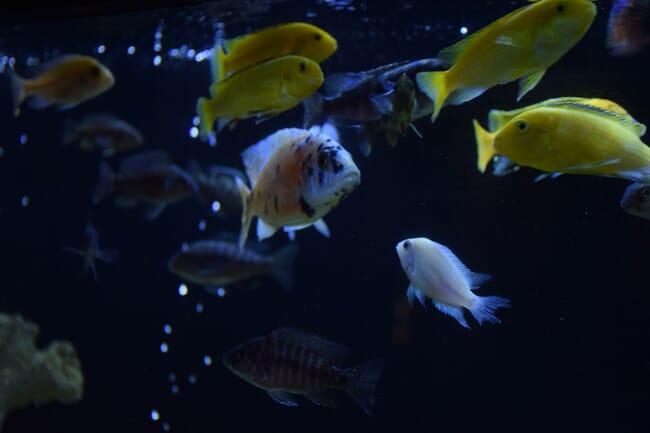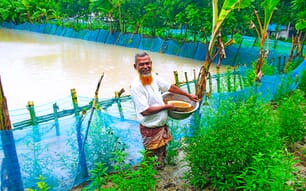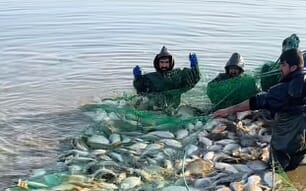
© Zayin Farms
Tell us about your journey into aquaculture
From a young age I was fascinated by the aquatic environment and its creatures, often experimenting with small fish tanks and backyard ponds. Over time, this curiosity blossomed into a deep passion for sustainable aquaculture.
As my knowledge and interest grew, I started exploring aquaculture more seriously, learning the techniques and understanding the ecosystem better. That’s when KCIC [Kenya Climate Innovation Center] saw the potential in what I was doing. They believed in my vision and in 2021 supported me with essential equipment and incentives, giving me the push I needed to scale up. The system cost over $7,752 to set up.
Today, my aquaculture farm is thriving. It’s amazing to see how what began as a simple hobby is now a successful venture, contributing to food security and providing sustainable livelihoods. The transformation from passion to reality has been incredibly rewarding, and I look forward to growing the farm even further.
Which species of fish do you rear?
I keep tilapia and African catfish for food, as well as ornamental fish including fancy goldfish, koi carps, oranda, shubunkin, blackmore, African cichlids, guppies, mollies, sword tails and zebra fish. I also fabricate beautiful aquariums of all types from simple designs to complex pro-level specialty aquariums like marine aquariums that can maintain a healthy environment for sensitive aquatic creatures.
A complete cycle for tilapia and catfish under optimal conditions takes only six months.
How has your farm grown?
Starting out, I could barely sustain 300 tilapia and 100 African catfish, mainly because the resources needed to run a recirculating aquaculture system are on the high side.
However, I currently produce 6 tonnes of tilapia and 2.5 tonnes of catfish, as well as numerous ornamental fish.
Where do you sell your fish and where do you source fingerlings from?
The market for ornamental fish is mainly in Nairobi - the clients that I have are mainly referrals from the few clients that I started with building aquariums for them, and supplying ornamental fish, so my clientele base has grown more like a community. I have not had the need to advertise most of my fish, although I have social media pages, as the fish I produce get sold as soon as they are ready.
For the catfish and tilapia, I source fingerlings from certified hatcheries within Machakos and its environs. However, I have hatchery tanks for tilapia, once I have all the necessary equipment for the hatchery, I should be able to supply certified fingerlings to farmers around my region.
For ornamental fish, I do the breeding myself.
In terms of the market for ornamental fish, prices can vary from $0.39 to $5.03 per fish. Meanwhile a kilo of tilapia is worth $3.9 and a kilo of catfish is worth $4.7.

© Zayin Farms
What is the size of the farm, and what technology do you use?
The fish farm sits on a piece of land measuring 75 feet by 100 feet. Currently, I have two large grow-out tanks holding 24,000 litres each and able to raise 2,500 fish each to harvest size of 350 grams for tilapia, one 14,000 litre tank that I use to grow 400-600 African catfish, six tilapia hatchery tanks that can hold over 5,000 fingerlings each, 10 smaller tanks for ornamental fish breeding that are 1,000 litres each, 10 ornamental fish breeding troughs and five aquariums, also for ornamental fish breeding.
Instead of discharging waste-filled water into the environment, RAS uses mechanical and biological filters to remove waste products, allowing the same water to be recirculated through the fish tanks. This creates a controlled environment that enhances fish health and growth while minimising the need for large water inputs.
The main reason I use RAS is because of water scarcity here in Machakos and RAS drastically reduces water consumption. It is also more environmentally sustainable as it prevents pollution by limiting wastewater discharge into the environment. The closed-loop system helps me maintain a clean environment, reducing the farm’s ecological footprint.
The third reason is that is generates better fish health and growth, as I can closely monitor water quality - such as oxygen levels, pH, and temperature - creating ideal conditions for fish growth. This control leads to healthier fish, fewer diseases, and higher yields.
By using RAS, I can also intensively farm fish in smaller spaces, maximising productivity and making efficient use of the available land and resources.

© Zayin Farms
However, it is important to note that RAS farms are energy intensive, so anyone interested in starting a RAS venture should also consider using renewable energy sources like solar panels to offset some of the energy costs and also to reduce the carbon footprint.
We use the waste water from the fish farm to grow fruit and vegetables outdoors, since it is nutrient rich and because water is a scarce resource. We are also experimenting with aquaponics, which helps maintain water quality for the fish while providing essential nutrients for plant growth.
Currently only two people are running the farm: RAS are not labour intensive, as they are efficient and the system includes hydrodynamics which mitigate the need for tank cleaning, so the only maintenance needed is checking the pumps and monitoring the water quality parameters.
What are your future plans in aquaculture?
My plans are to scale up and expand the venture to at least 150 tonnes annually, as with the rise in population so the demand for fish rises every day. Many people are also now moving towards eating healthy by reducing their intake of red meat and turning to fish.
What advice would you give to those considering a career in aquaculture?
That RAS a blessing to society if managed properly. But to do it you will need a reliable source of water. The farm location also matters a lot: since most of the fish we are growing are tropical, we need warm water. The last piece of advice would relate to access to renewable energy sources to offset high power bills.








